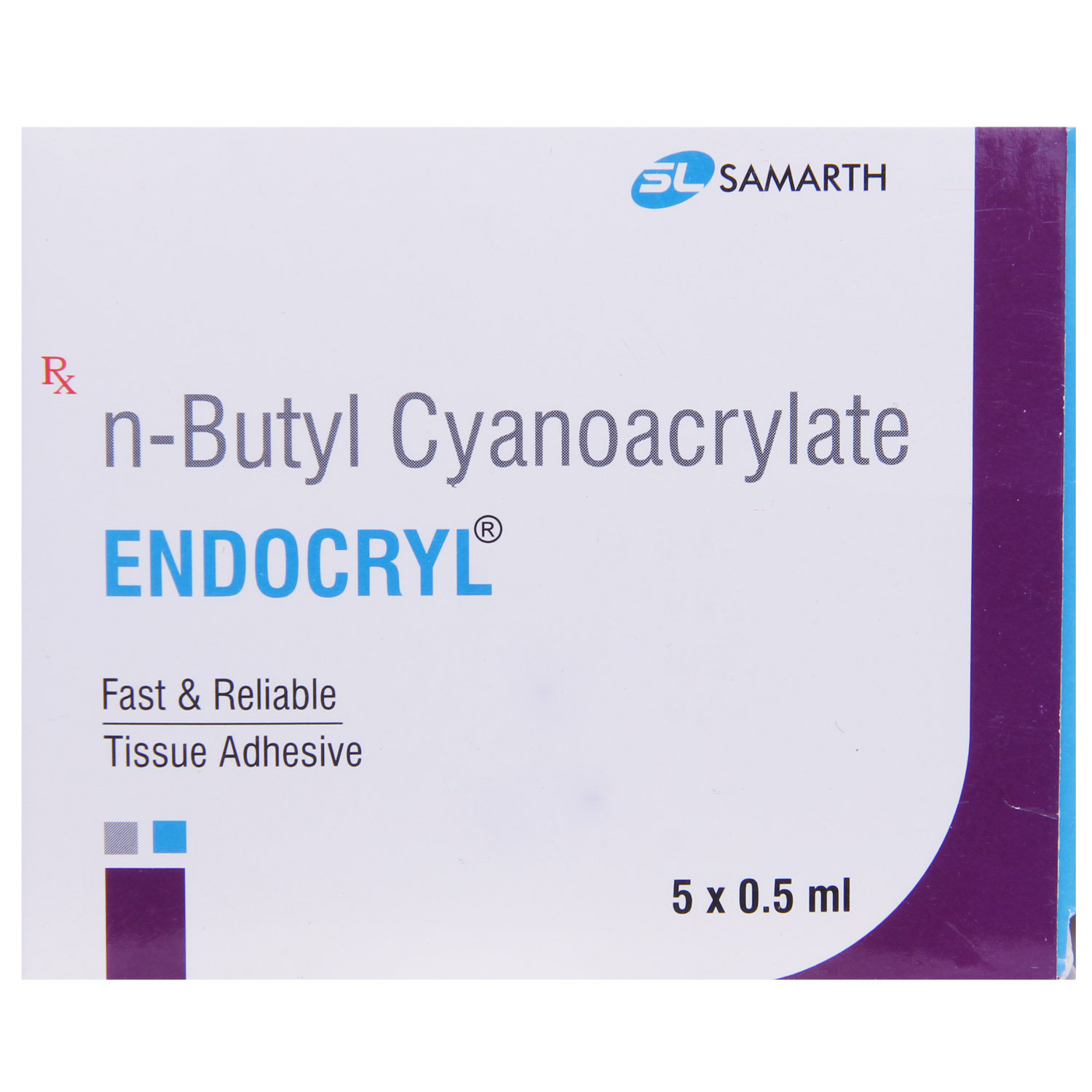N Butyl Cyanoacrylate
About N Butyl Cyanoacrylate
N Butyl Cyanoacrylate is a tissue adhesive solution indicated for the prevention of bleeding, wound closure, sclerotherapy, and mesh fixation. N Butyl Cyanoacrylate is used as an adhesive for lacerations (cut/tear) of the skin, used to treat arteriovenous malformations (abnormal connections between veins and arteries), and bleeding gastric varices.
N Butyl Cyanoacrylate contains N-butyl-cyanoacrylate, which polymerises quickly in connection with the tissue fluids and hardens immediately, leading to the formation of a strong bond between the wound edges. Thus, help stop bleeding and promotes skin closure and healing.
N Butyl Cyanoacrylate is a chemically active, free-flowing liquid which helps in wound bonding. The procedure of tissue glueing is simple, quick, and effective for the closure of wounds without any complications in comparison to conventional suturing.
Avoid contact of N Butyl Cyanoacrylate with fingers, gloves or surgical instruments. N Butyl Cyanoacrylate should not be used in contaminated wounds as it might aggravate the infection. The thick application of N Butyl Cyanoacrylate should be avoided as it does not enhance the bonding and may also tend to loosen and crack prematurely.
Uses of N Butyl Cyanoacrylate
Medicinal Benefits
N Butyl Cyanoacrylate is used as an adhesive for lacerations (cut/tear) of the skin, used to treat arteriovenous malformations (abnormal connections between veins and arteries), and bleeding gastric varices. N Butyl Cyanoacrylate is a chemically active, free-flowing liquid which helps in wound bonding. The procedure of tissue glueing is simple, quick, and effective for the closure of wounds without any complications in comparison to conventional suturing. N Butyl Cyanoacrylate polymerises quickly in connection with the tissue fluids and hardens immediately, forming a strong bond between the wound edges. Thus, help stop bleeding and promotes skin closure and healing.
Directions for Use
- N Butyl Cyanoacrylate will be applied by a doctor or healthcare professional.
- Do not use it on your own.
Storage
Drug Warnings
Avoid contact of N Butyl Cyanoacrylate with skin and eyes. N Butyl Cyanoacrylate should not be used in contaminated wounds as it might aggravate the infection. The thick application of N Butyl Cyanoacrylate should be avoided as it does not enhance the bonding and may also tend to loosen and crack prematurely. Avoid contact of N Butyl Cyanoacrylate with fingers, gloves or surgical instruments.
Drug Interactions
Drug-Drug Interactions: No interaction found/established.
Drug-Food Interactions: No interaction found/established.
Drug-Disease Interactions: No interaction found/established.
Drug-Drug Interactions Checker List:
Safety Advice

Alcohol
consult your doctorIt is not known if alcohol affects N Butyl Cyanoacrylate. Please consult a doctor.

Pregnancy
consult your doctorLimited information is available regarding the use of N Butyl Cyanoacrylate during pregnancy. Please consult your doctor if you are pregnant or if you have any concerns regarding this.

Breast Feeding
consult your doctorLimited information is available regarding the use of N Butyl Cyanoacrylate in breastfeeding women. Please consult your doctor if you are breastfeeding or if you have any concerns regarding this.

Driving
consult your doctorIt is not known if N Butyl Cyanoacrylate affects driving. Drive or operate machinery only if you are alert.

Liver
consult your doctorLimited information is available. Please consult your doctor if you have a liver impairment or any concerns regarding this.

Kidney
consult your doctorLimited information is available. Please consult your doctor if you have kidney impairment or any concerns regarding this.

Children
consult your doctorLimited information is available regarding the use of N Butyl Cyanoacrylate in children. Please consult a doctor if you have any concerns regarding this.
Habit Forming
Diet & Lifestyle Advise
Include foods that promote wound healing in your diet, such as meat, tofu, eggs, beans, milk, cheese, Greek yoghurt, soy, and fish.
Stay hydrated, as it is vital for promoting cell growth. Drink plenty of fluids.
Consume foods rich in vitamins A and C.
Patients Concern
Disease/Condition Glossary
Laceration: A laceration is a wound that is caused by the tearing of soft body tissues. This kind of wound is generally irregular and jagged. Accidents with tools, knives, or machinery could lead to lacerations. A laceration may be caused by injury to a sharp object or due to impact injury from a blunt object. A laceration cut might be shallow or deep, short or long, and narrow or wide.
Arteriovenous malformations: It is the abnormal connection between veins and arteries, usually in the spine and brain. The arteries in such a condition can rupture, leading to bleeding in the brain/spine.
Bleeding gastric varices: Gastric varices are the dilated submucosal veins in the stomach lining that can cause bleeding in the upper gastrointestinal tract. These are most commonly found in patients with portal hypertension (high blood pressure in the portal vein), which could be a complication of cirrhosis.
FAQs
N Butyl Cyanoacrylate polymerises quickly in connection with the tissue fluids and hardens immediately, forming a strong bond between the wound edges. Thus, help stop bleeding and promotes skin closure and healing.
The procedure of tissue glueing using N Butyl Cyanoacrylate is simple, quick, and effective for the closure of wounds without any complications in comparison to conventional suturing. The average time for wound closure is one minute. It is less painful than suture materials.
N Butyl Cyanoacrylate is used in the fixation of hernia meshes, particularly in inguinal hernia surgery for implanting a prosthetic mesh.
N Butyl Cyanoacrylate is used in the closure of skin wounds without tension, such as incisions from minimally invasive surgery and clean surgical incisions. N Butyl Cyanoacrylate is also used in trauma-induced lacerations.





